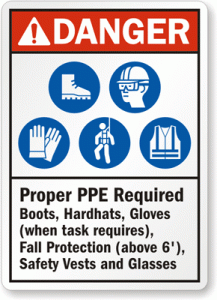Heat safety: A universal issue that requires an individual approach

Heat safety is an issue that affects agricultural workers as well as other industries. (Photo via inbcnews.com, how immigrants might actually boost wages.)
This is the time of year when we start to hear about heat emergencies, and the need to keep hydrated and cool, especially if you work outdoors in the sun.
A combination of high temperatures, high humidity and physical exertion can raise the body’s temperature to a point that it can’t be cooled by sweating, which can lead to heat exhaustion and quickly progress to heat stroke. According to the Occupational Safety and Health Administration, the U.S. workforce sees thousands of serious heat-related illnesses every year, and an average of 30 heat-related deaths.
While OSHA’s annual heat safety campaign focuses on educating employers and employees in fields such as construction and agriculture, this safety issue isn’t restricted to those industries, and those at risk aren’t always easy to identify. Here are a few reasons why all employers should pause and consider the specific risks of their individual employees.
It’s an indoor threat, too
Workplaces with radiant heat sources and without ample cooling – including factories, laundry facilities, chemical plants and commercial kitchens – can become furnaces during hot months.
Excessive heat is about more than the ambient air temperature, OSHA points out. Because radiant heat, air movement, conduction, and relative humidity all affect an individual’s response to heat, indoor workers can face greater risks than their outdoor colleagues.
Heat exhaustion requires immediate action
We all know dedicated employees who will keep working through anything – even heat exhaustion. But the symptoms of this condition – including headache, nausea, vertigo, weakness, thirst and giddiness – are similar to those of heat stroke, which requires an immediate trip to the hospital, not a few minutes in the shade or the afternoon off. As OSHA suggests, “Regardless of the worker’s protests, no employee suspected of being ill from heat stroke should be sent home or left unattended unless a physician has specifically approved such an order.”
Additional layers = additional risk
Workers who are required to wear protective, and sometimes impermeable, clothing – in fields such as construction, asbestos removal or refining – are particularly at risk for heat stress.

While mitigating some risks, personal protective equipment can make a worker more susceptible to heat exhaustion. (Image via MySafetySign.com.)
Prior injury = additional risk
According to OSHA, a worker who has previously experienced a heat injury is predisposed to experiencing an additional injury.
Acclimation is needed
Workers who haven’t had time to slowly acclimate their bodies to a hot environment are more prone to heat collapse and heat fatigue, according to OSHA. The agency advises employers to establish an acclimation program, which might include gradually increasing workers’ exposure over the course of a week, and then providing more frequent breaks during the next week. Because temporary laborers are less likely to ease into the heat, OSHA is also targeting this industry in its annual heat safety campaign.
Although OSHA does not have a specific heat-related standard, the agency can issue heat-related citations under the general duty clause of the Occupational Safety and Health Act, which requires employers to furnish a place of employment that is “free from recognized hazards that are causing or are likely to cause death or serious physical harm.” The agency’s website offers more information on preventing and recognizing heat illnesses and heat stroke, and a free app for mobile devices that monitors the heat index at a job site and provides a risk level.
Category: OSHA, Safety Tips















